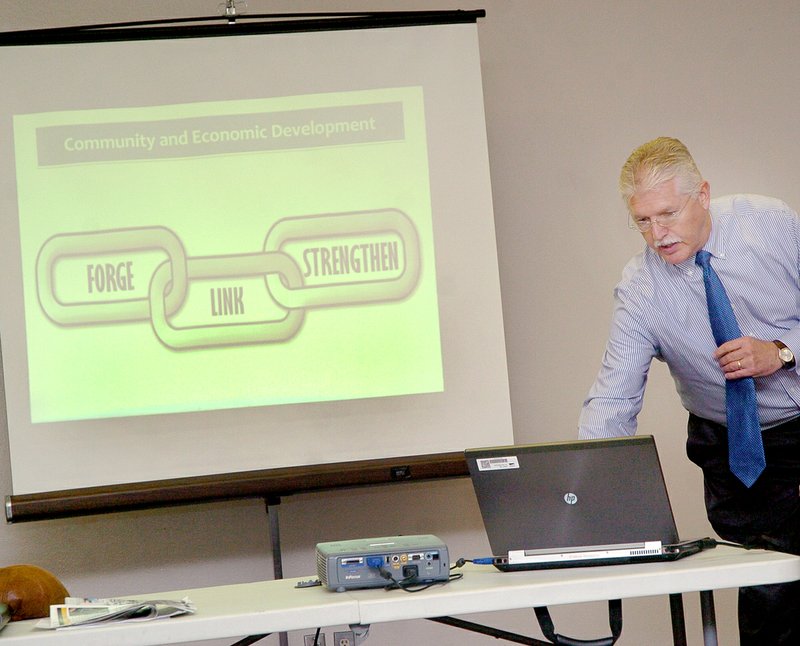Representatives from USDA Rural Development held a meeting May 28 in the Community Room at New Mac Electric in Anderson to let area people they have money burning a hole in their pockets.
The thing is that most of its for loans, though at a low interest rate, with just a little left over for grants.
Presenters from Rural Development covered funding options for business programs, communities facilities, water and wastewater and housing.
Mark Hultgren, area director from the Springfield office gave an overview of the business programs.
"On the business program is we have several different funding mechanisms," Hultgren said. "The one that usually has the most funds available is the Business and Industry Loan Guarantee program. It's really similar to an SBA loan. What our role is in that program is we guarantee banks of any losses up to 80 percent."
Hultgren said this allows a bank not to count that portion of the loan against its legal lending limit, making more money available for the community.
Another business program that Hultgren touched on was the Value Added Producer Grant. He said this program is used for agriculture producers. Examples would be a farmer who turned milk into yogurt or peanuts into peanut butter. The grants are a 50 percent match.
REAP (Rural Energy for America Program) grants are basically for renewable energy or improvements for existing energy sources. He said a lot of poultry producers used a REAP grant when propane got so expensive and they switched to alternative fuels, including hay burner and pellet furnaces.
The REAP grants are for 25 percent of the total.
Community Facilities
Bruce Hively, area specialist out of Springfield, said the community facilities grants are based on the median household income (MHI) of the community. He said the the grants range from 15 to 75 percent match based on the MHI.
Lao available are direct and guaranteed loans. Hively noted there was $60,000 to $70,000 available for grants in the Southwest District while there was $10 million available for loans.
What qualifies for the community facility program?
"Anything considered for the community to grow and thrive and to serve its residents," Hively said.
Water, Wastewater
He said the loans and grants are available for water and wastewater improvements for municipalities and water districts.
He said water rates must be set at a minimum in order to receive a grant.
"We figure the rate for water and sewer users based on two percent of MHI," Hively said.
Hively said that rate is figured against the cost of the project and if not enough to cover the cost, the difference is eligible for grants. He said Rural Development will not have that much in grant funding itself, but will work with other funding agencies to try to come up with the funds.
Housing Programs
Vicky Hubbard, area technician from the Neosho office discussed Rural Development's three types of single family housing programs, which include home repair, home purchase and guaranteed home purchase.
The home repair program has loans at one percent or grants. The applicant has to be very low income and $20,000 is the maximum for a loan.
"If you have money for a loan, we have to took at that first," Hubbard said. "For a grant, you have to be 62 years old or older and demonstrate an inability to make a loan payment."
There is a lifetime $7,500 limit on grant funds and repairs must be for health and safety issues.Direct loans are available for very low income levels. The length can be from 33 to 38 years at a fixed rate of 3.125 percent.
Guaranteed loans are available to those at moderate income levels. There is a one-time fee of two percent of the loan and an annual fee of 0.4 percent of the amortized balance.
For multi-family housing, Leon Melvin said Rural Development is mainly servicing existing projects.
He said there are direct loans and guaranteed loans, but not much construction is being financed through Rural Development at his time.
About 10 people attended the meeting, including Kaycee Hunter who is looking to finance a not-profit aftershool program and community center.
Also present was Jackie Payerli, who was representing the Tree of Life Family Advocacy Center of Southwest Missouri.
Community on 06/04/2015
